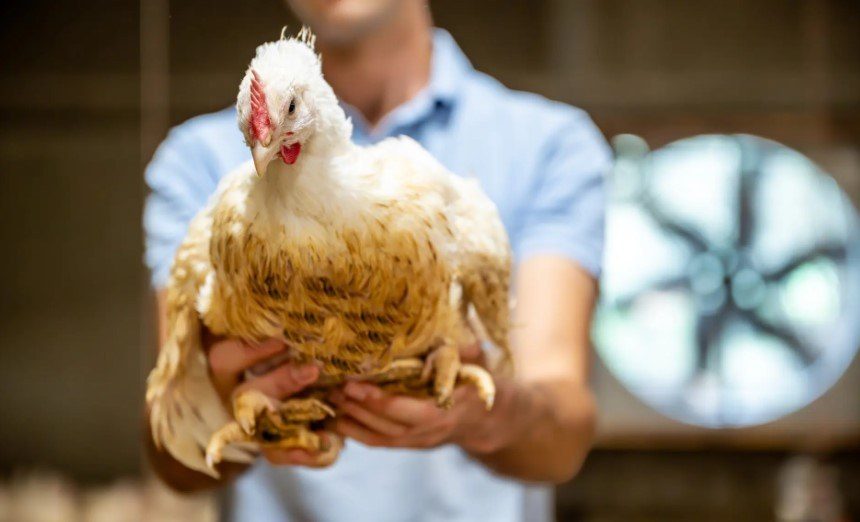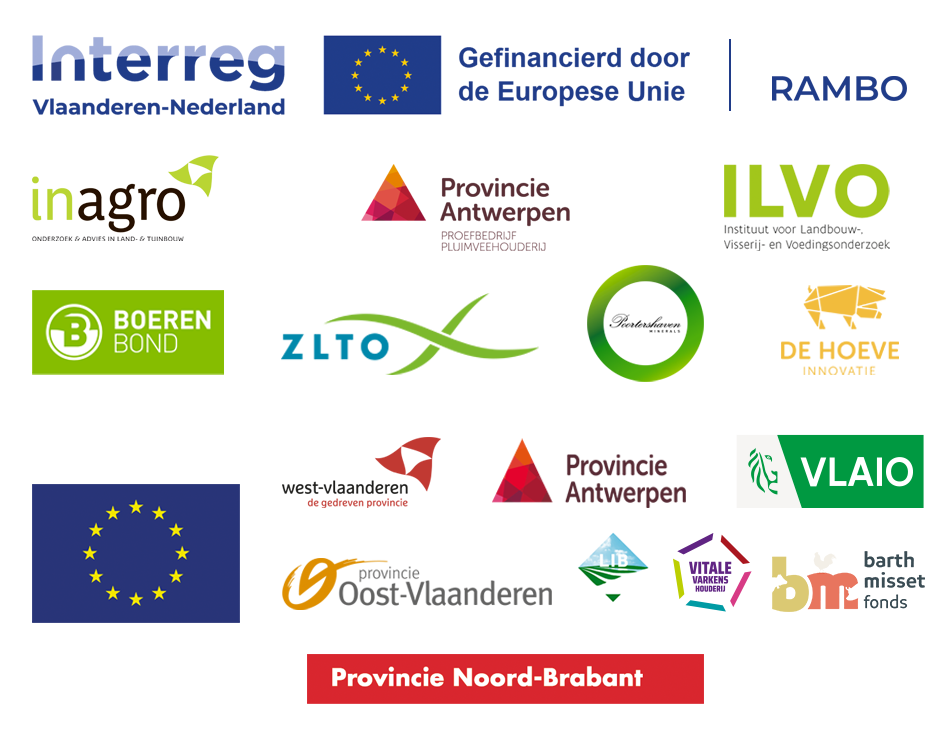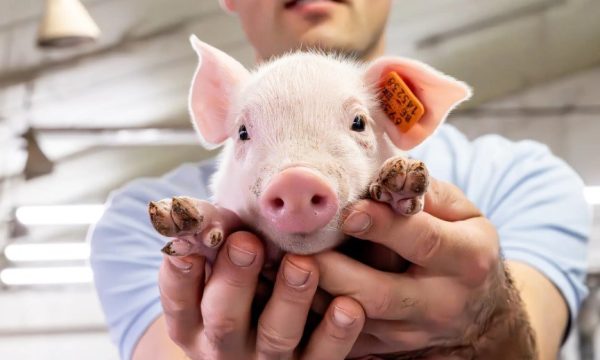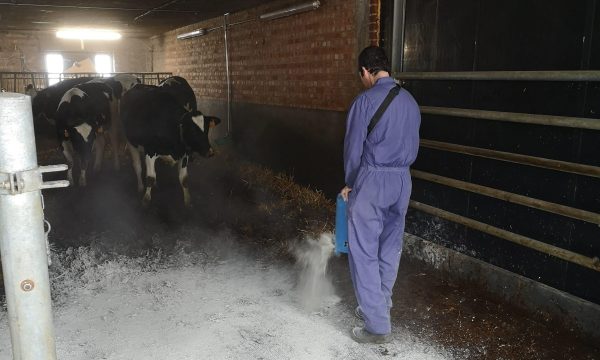Project news Ammonia reduction in poultry farming - first results of promising techniques

How can livestock farmers reduce ammonia emissions from their farms? There are several recognized techniques on the RAV list in the Netherlands and the PAS list in Flanders. But are there other solutions that are practically feasible, affordable, and scientifically substantiated? The RAMBO project researches, tests, and evaluates promising techniques for pig and poultry farming. In this article we give an intermediate status of the research on ammonia reduction in poultry farming.
The RAMBO project selected five promising measures for layers and five for broilers. Research is still ongoing, but some measures are already showing hopeful results. During the second sounding board group meeting of the RAMBO project on 07/11/2024 and at the study day "The road to reduced emissions in pig and poultry farming" on 17/01/2025, the first findings of a year of research and practical experiences were shared.ennen
1. Rotate manure belts more frequently
Rotating the manure belts three times a week instead of once a week reduces the amount and time manure remains in the barn, which reduces ammonia formation. Tests show that higher frequency leads to a marked decrease in ammonia emissions.
Additional research plannedClimate control and barn emissions are affected by temperature, humidity, etc., which in turn are highly variable throughout the seasons. Ammonia formation on the manure belt is reduced when manure dries out quickly. In further research we will look at what the seasonal influences are on the ammonia reduction potential of this measure. After all, this info is also important in the cost-benefit consideration of the measure.
2. Litter removal
In aviary units, the effect of removing litter from the floor more frequently, for example every two weeks instead of every six weeks, is being tested. Initial results show that the effect on ammonia emissions is limited, while the measure is labor intensive.Additional research planned
Climate control and barn emissions are influenced by temperature, humidity, etc., which in turn are highly variable throughout the seasons. Research is focusing on the seasonal influences that determine barn climate control and combining it with other techniques to generate more impact.
3. Housing systems
In this study, we compare three types of housing for laying hens:
- a unit with 3,072 animal places in conventional enriched cages;
- a unit with 1,800 animal places in an alternative Veranda Code2+ house;
- a unit with 1,920 animal places in a conventional free-range barn with aviary housing. Initial results indicate that ammonia emissions in the free-range barn are much higher than in the enriched cage- of Veranda Code2+ unit.
Additional research planned
Climate control and barn emissions are influenced by temperature, humidity, etc., which in turn are highly variable throughout the seasons. The first results date from the summer period. Measurements continue in the fall, winter and early spring to take seasonal influences into account.
4. Use of zeolites in litter or feed
Zeolites are being tested for their ability to bind cations such as ammonium. The trial has just started, so we cannot yet make any statements about the effect.
Additional research planned
The research focuses on practical applicability and the optimal amount of zeolites needed for a measurable emission reduction over several seasons.
5. Breeds
In Flanders and the Netherlands, different types of hen hybrids, or genetic lines, are used. We differentiate two major breed groups: the brown and the white hen. There is a clear difference in management, behavior and production performance between white and brown hens. So the hypothesis was that this could have an effect on ammonia development in the barn. The trials are still ongoing, and it is too early to share a conclusion on this at this time.Additional research planned
The study focuses on seasonal influences and the effect of management of hens on ammonia formation in these houses.
Update: research on ammonia reduction measures for broilers
1. Alternative litter materials
In broilers, tests are being conducted to determine whether flax pulp as a bedding material can reduce ammonia emissions. Initial results are promising, with a noticeable decrease in emissions compared to straw pulp used as a standard material in the trials.Additional research planned
This trial will be repeated in different seasons to confirm the effectiveness of flax straw litter, including at different ventilation and humidity levels in the barn.
2. Zeolites in litter
As with laying hens, zeolites are tested in the litter layer, with an amount of zeolite strewn over the litter layer at several times throughout the round. The trial runs over several rounds.Additional research planned
Research is underway to determine if the cost and performance of zeolites can be balanced by applying lower amounts without loss of effectiveness.
3. Feed composition
Reducing the protein content in broiler feed reduces the formation of urea in the manure, an important precursor for ammonia. Adjusting the electrolyte balance in the feed could also be an interesting avenue. Feed composition trials have just started.Additional research planned
In addition to the effect on ammonia emissions, the impact of a lower protein content or adjusted electrolyte balance on animal health, growth and feed conversion is also being examined. The cost-effectiveness of this adjustment is also being further investigated.
4. Zeolites in the feed
Zeolites can easily bind cations and exchange them back. Application of zeolites through the feed is more user-friendly than administration over the litter layer at multiple times during the round, and may also have a positive effect on intestinal health.
Additional research planned
In the trials, we are monitoring animal health, growth and feed conversion in addition to the effect on ammonia formation in a broiler house.
5. Acidic additives to litter
Acidifying litter materials lowers pH, which is more likely to reduce ammonia formation. Different additives are being tested in the trials. Initial results are mixed, with one additive we see a very strong reduction in ammonia emission, with another the effect is limited.Additional research planned
The research focuses on selecting the most cost-effective additives and their long-term effects on barn climate and animal health.
Important feedback from the sector
During the workshop at the sounding board meeting, the interim research results were discussed with the participants. They especially appreciated the practical measures such as more frequent turning of manure belts and the use of alternative litter materials. At the same time, points of concern were mentioned, such as the high labor intensity of litter management and the cost of additives such as zeolites.
Attendees also stressed the importance of simple assurance of measures, such as via feed delivery notes or measurement data. For litter measures, this proved more complex, which can complicate implementation. There were also calls for further coordination of techniques with permit requirements and a broad approach that takes into account other emissions and animal welfare. These insights help to further focus research on feasible and effective solutions.Hope for the future
The first research results within the RAMBO project show that several measures, such as rotating manure belts more frequently, alternative litter materials and litter acidification, have potential to reduce ammonia emissions in poultry farming. For both layers and broilers, specific techniques are under investigation that not only contribute to emission reduction but also take into account animal welfare and practicality.
Although further optimization and validation are needed, the project provides concrete tools for poultry farmers to make sustainable choices. Through collaboration between researchers, farmers and other stakeholders, solutions are being worked on that are not only technically and economically feasible, but also contribute to a more sustainable future for the sector. Innovation and collaboration remain essential for success.
More info
https://interregvlaned.eu/rambo/over-ons - www.provincieantwerpen.be/RAMBO
RAMBO is a project of Interreg Vlaanderen-Nederland in collaboration with:



